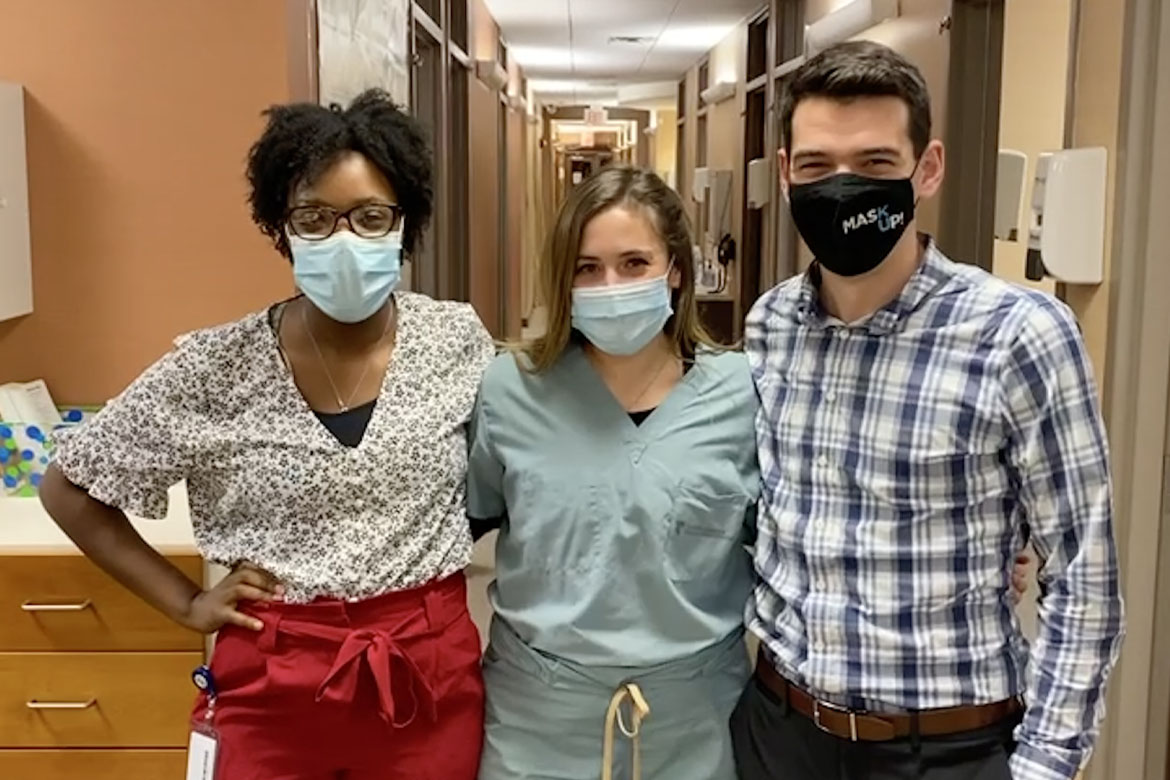For nearly 20 years, JayDoc Free Clinic has offered care to underserved populations in Kansas City. The arrangement is mutually beneficial—working in the clinic allows medical students at the University of Kansas School of Medicine (KU)—part of the AMA’s Medical Student Sponsorship Program—a chance to enhance their learning opportunities.
In normal times, working in the clinic was a chance for students, working in tandem with physician volunteers, to learn clinical and soft skills. That hasn’t been the case for Xena Moore during her tenure as the facility’s co-executive director, which coincided with the COVID-19 pandemic.
“I thought it was going to be a lot of growth and patient interaction,” said Moore, a second-year medical student at KU. “It turned out to be a lot of rebuilding. Our clinical model right now doesn’t look anything like it used to.”
Working from home
Open three nights a week, JayDoc sees about 1,500 patients annually. Visits include both general treatment and specialty-specific care. Before the pandemic, most visits were walk-ins, and most of the labor was provided by medical students
When COVID-19 hit, and precautions called for medical students to be removed from patient interaction, the clinic had to shutter its doors.
Moore and her colleagues worked to make sure that wasn’t the case for long. They worked diligently to come up with a telehealth model that would allow them to see their high-risk diabetic patients. That model involved phone check-ins, and because of many of the patients were not fluent English speakers, it also called on clinic workers to find interpreters.
“This is all happening during the shutdown,” said Laurel B. Witt, MD, an assistant professor of family medicine at KU and faculty adviser at the clinic. “They continued to provide care even though these students were told they had to stay home, they figured out a way to get it done. It’s extraordinary.”

Adjusting on the fly
As time progressed and restrictions eased, students were able to return to the clinic. At first, they did so in limited numbers without actually being in the same room as patients, conducting patient interactions via conferencing software. The clinic also had to move from a walk-in model to one that required appointments, in order to limit capacity.
Other logistical challenges persisted. They included a lack of personal protective equipment (PPE), a shortage of laboratory workers, and how to communicate with peers in a group setting without risking exposure.
“Once we figured something out, something else cracked,” Moore said. “There were a lot of days where we didn’t think we could handle it, but we have a great team.”
Still, when those cracks arose, the students running JayDoc found ways to patch them—whether it was soliciting mask donations or coming up with a method to communicate with each other that Moore said was “essentially a really elaborate Google Sheet.”
In May, patients returned to the clinic in limited numbers. By July student volunteers returned to the facility
“Seeing the impact in person and being in clinic reaffirms why you should be giving it your all,” Moore said. “A lot of people we see haven’t been to a doctor in years. Being able to give them something positive—a path to change—is really motivating even on your hardest days.”
The fact that patients are now entering the clinic’s doors—at a time when most student-run clinics have remained shuttered—is a testament to students’ passion, Dr. Witt said
If Moore and the other co-executive directors “had chosen not to engage 100%, like they did, this clinic could have shut its doors—if not forever, then a while,” she added. “What this has done is ensure the legacy of the clinic—ensure that the people we care for in our community continue to receive care. They’ve shown us how accountable they are willing to be to this community. I’m blown away.”
Source: https://www.ama-assn.org/residents-students/medical-school-life/how-medical-student-run-clinic-navigating-pandemic

COMMENTS